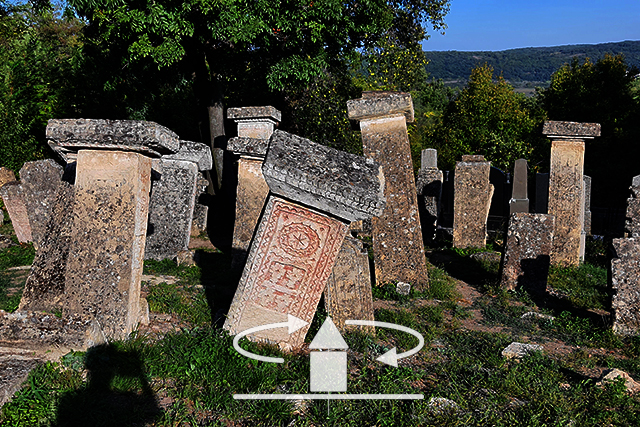Old village cemetery, Rajac
Protected cultural monument, listed as SK 342 with the Republic Institute for the protection of monuments of cultural heritage.
Old village cemeteryNegotin, Bor administrative district
Where is it?
The stone village of wine-makers, Rajačke piminice (Rajac's Wineries), is located on the hill called Belo brdo, 3 km from Rajac village and 20 km south of Negotin. Next to Rajačke pimnice, the city of the living, there is the city of the dead, Old village cemetery.
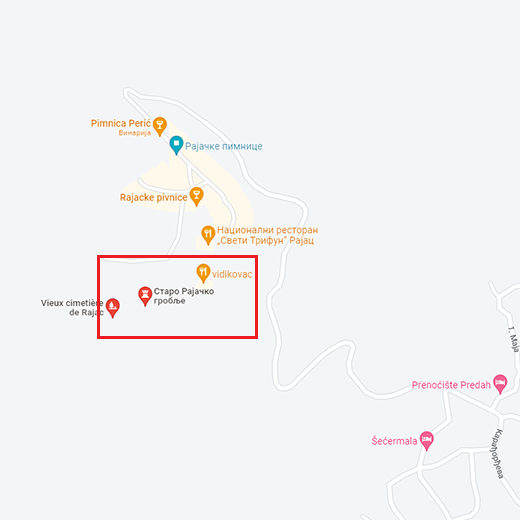
Research
Winemakers' houses of Rajačke pimnice are protected as a whole, and since 2010, together with their highly unusual cemetery, were suggested for the UNESCO list of world cultural heritage.
Based on the research organized by the Republic Institute for the protection of monuments of cultural heritage in 2011, the team, consisting of an archeologist, an ethnologist, and an art historian recorded 1540 ancient graves. The research included geodetic surveying, photographing and making of historical and ethnographical documentation. The protection project also included laboratory examination of the stones used to build monuments in order to establish the possibilities for protection and consolidation.
Dating
According to the research, the tombstones on the old Rajac cemetery date from late 18th to early 20th century. The locals say that the golden age of Rajačke pimnice was between 1864 and 1900. At the time, phylloxera infested French vineyards and the French discovered this area suitable for wine making. The most lavishly decorated tombstones, the highest ones in the cemetery, probably date from that period.
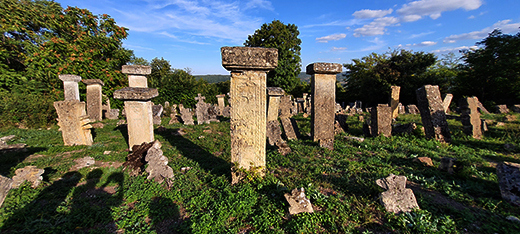
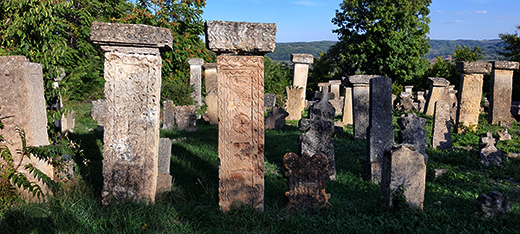
Description
Rajačke pimnice, especially their unusual cemetery, represent a unique monument whole in Serbia. Where wine village ceases, the cemetery of its former inhabitants begins.
The city of the dead, as named by the locals, or „Serbian Stonehenge“ is a unique cemetery, different from the other ones in this area. Tombstones are made of the same sandstone used for the houses. They are mostly monolytical blocks with rectangular bases and a larger cap on top. One third of the tombstone is dug in the ground and two thirds are above the ground. The highest ones are 2-3 meters high. Equally frequent are somewhat smaller tombstones in the shape of the stylized cross. Those are believed to be tombs of women and those in the shape of a massive column are believed to be tombs of men.
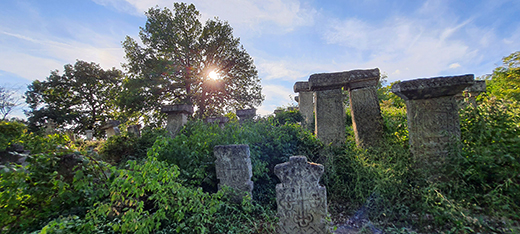
All tombstones are richly decorated with carved-in ornaments. Frequent motifs include swastikas, Maltese crosses, multiple crosses gilded at the edges, symbol of the Sun as the source of life, rosettes, as well as the tree of life in various versions. A zigzag line is often featured on lateral sides or as a frame on the front of the monument.
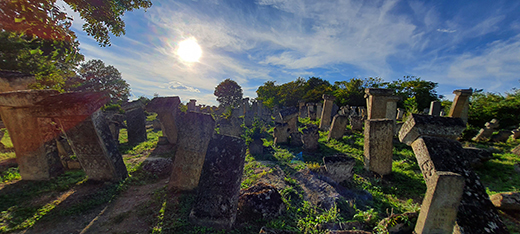 Traces of colour indicate that the tombstones used to be coloured in red or blue.
Traces of colour indicate that the tombstones used to be coloured in red or blue.
The older tombstones have no inscriptions. The first ones appear as late as 1860, in a framed box on the front, while the rest of the tombstone is still decorated with carved-in ornaments.
Folk lore and belief
During the burial of the winemakers, the custom was to drive the deceased through the village for his last journey, so that the other winemakers could pour wine after him, thus honoring him and saying their goodbyes
The locals say the cemetery monuments reflected the wealth of the deceased; the wealthier ones could afford high and richly decorated tombstones.
Јулка Кузмановић Цветковићархеолошкиња
